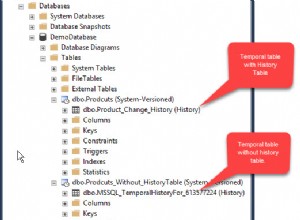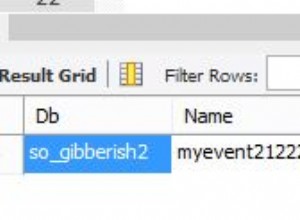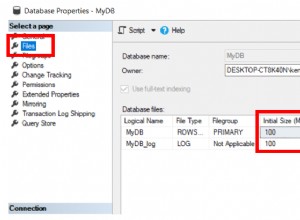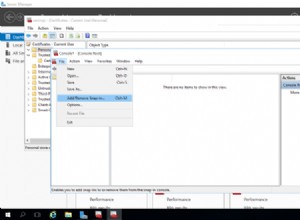J'ai fini par adopter cette approche en utilisant l'authentification AD. J'ai utilisé l'exemple de cet article pour m'inspirer :http://www.eggheadcafe.com/community/sql-server/13/10141669/using-excel-to-update-data-on-ms-sql-tables .aspx
Notez que ces fonctions résident dans différentes zones du classeur Excel (objets, modules, ce classeur), mais voici une référence rapide.
J'ai également chacune des colonnes qui valident FK par rapport aux tables auxquelles elles font référence.
Voici quelques exemples de code :
Public aCon As New ADODB.Connection
Public aCmd As New ADODB.Command
Private Sub Workbook_Open()
Application.EnableEvents = False
PopulateSheet
Application.EnableEvents = True
End Sub
Sub Connect()
Dim sConn As String
sConn = "Provider=SQLOLEDB;Trusted_Connection=Yes;Server=[SVR];Database=[DB]"
With aCon
.ConnectionString = sConn
.CursorLocation = adUseClient
.Open
End With
BuildProcs
End Sub
Sub BuildProcs()
With aCmd
.ActiveConnection = aCon
.CommandType = adCmdStoredProc
.CommandText = "[SPROC]"
.Parameters.Append .CreateParameter("@in_EmployeeID", adInteger, adParamInput)
End With
End Sub
Sub PopulateSheet()
Dim n As Integer, r As Long
Dim aCmdFetchEmployees As New ADODB.Command
Dim aRstEmployees As New ADODB.Recordset
If aCon.State = adStateClosed Then Connect
With aCmdFetchEmployees
.ActiveConnection = aCon
.CommandType = adCmdStoredProc
.CommandText = "[SPROC]"
Set aRstEmployees = .Execute
End With
r = aRstEmployees.RecordCount
Worksheets(1).Activate
Application.ScreenUpdating = False
Cells(2, 1).CopyFromRecordset aRstEmployees
For n = 1 To aRstEmployees.Fields.Count
Cells(1, n) = aRstEmployees(n - 1).Name
Cells(1, n).EntireColumn.AutoFit
Next
Cells(1).EntireColumn.Hidden = True
End Sub
Private Sub Worksheet_Change(ByVal Target As Range)
Dim cell As Range
If aCon.State = adStateClosed Then Connect
With aCmd
.Parameters(0) = Cells(Target.Row, 1)
.Parameters(1) = Cells(Target.Row, 4)
.Parameters(2) = Cells(Target.Row, 5)
.Parameters(3) = Cells(Target.Row, 6)
.Parameters(4) = Cells(Target.Row, 7)
.Parameters(5) = Cells(Target.Row, 8)
.Parameters(6) = Cells(Target.Row, 10)
.Parameters(7) = Cells(Target.Row, 11)
.Parameters(8) = Cells(Target.Row, 12)
.Parameters(9) = Cells(Target.Row, 13)
.Parameters(10) = Cells(Target.Row, 14)
.Parameters(11) = Cells(Target.Row, 15)
.Parameters(12) = Cells(Target.Row, 16)
.Execute , , adExecuteNoRecords
End With
End Sub




